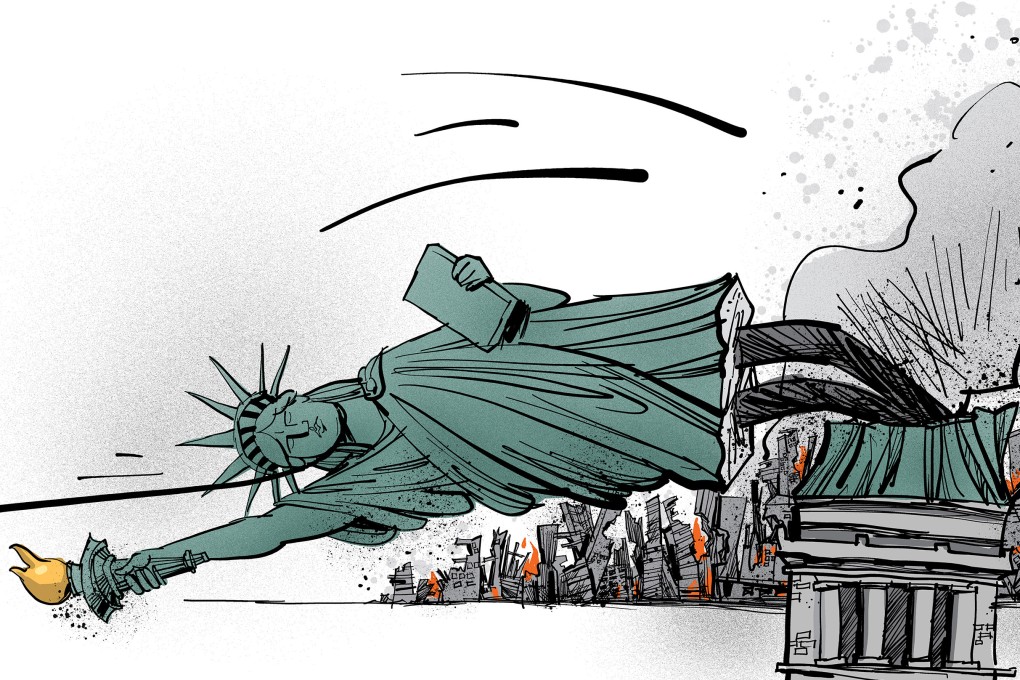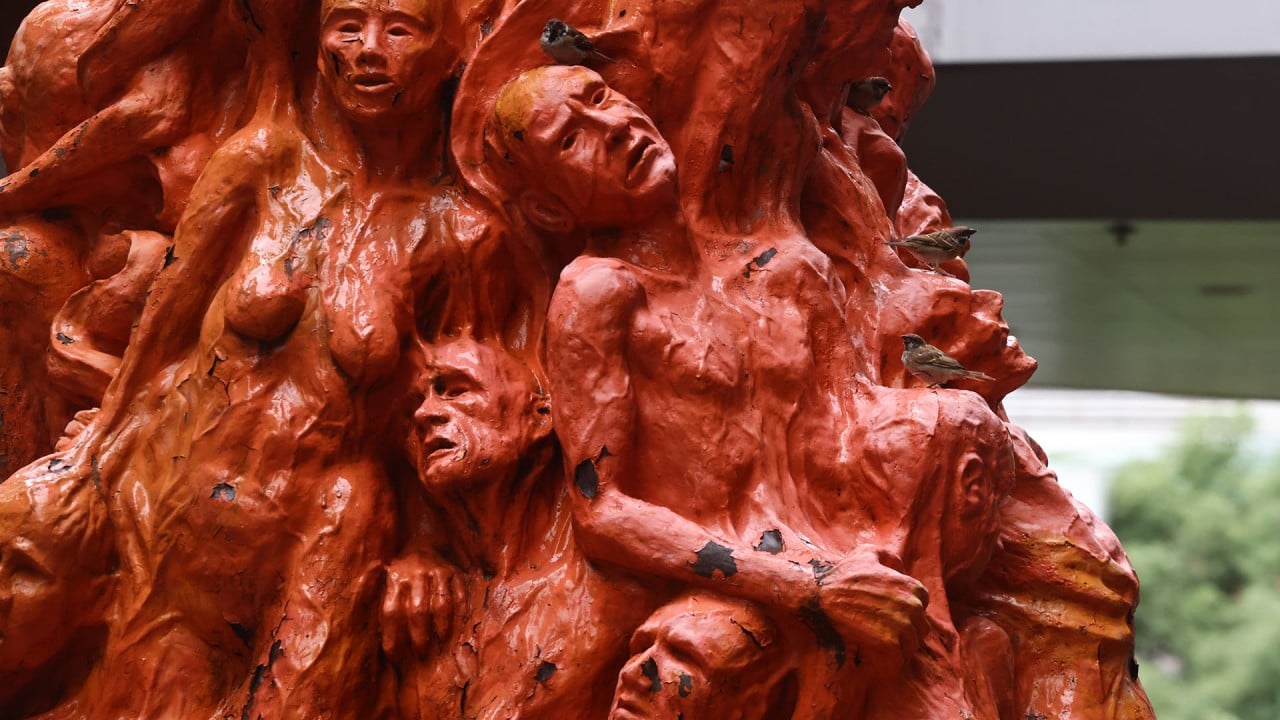Advertisement
Opinion | Crumbling US has no business telling others what to do with their statues
- In the US, where historical statues are being purged, the urge to bury the past is part of a widening political and class divide that threatens to tear the nation apart
- A society that feels the need to put statues into storage ought not to criticise others for dealing with their history
Reading Time:4 minutes
Why you can trust SCMP
23

Do dead sculptures tell no tales? Perhaps they still do. Recently the Pillar of Shame statue in Hong Kong, long displayed, was removed from the University of Hong Kong campus by the powers that be.
Advertisement
The sculpture had shaped the famous Tiananmen Square incident in terms of the bloody clash between soldiers and demonstrators. Last week, it was pointedly taken down and moved elsewhere, presumably not to appear in public for the foreseeable future.
Unfortunately, the Western news media has framed this story as another governmental clampdown on unwanted history. China is hardly the only polity where public statues and the like are towed out of sight, though.
Inconvenient historical facts bedevil people and governments all over the world. Lately, the United States has been cutting politically uncomfortable public displays down to size left and right.
Earlier this year in Richmond, Virginia, a giant statue of Robert E. Lee – one of the leading generals on the Confederate side of the American Civil War – was lifted by helicopter off its perch and dispatched into storage. The 12-tonne monument had sat in a prominent place for more than 130 years in Richmond, once the capital of the Confederate States of America.
Considered by many as one of the leading military tacticians of his era, Lee has been recast by contemporary politics into a symbol of sympathy for the days of the Confederacy, with its radioactive racism, and so needed to be airbrushed out in this era of historical retouching.

Advertisement

